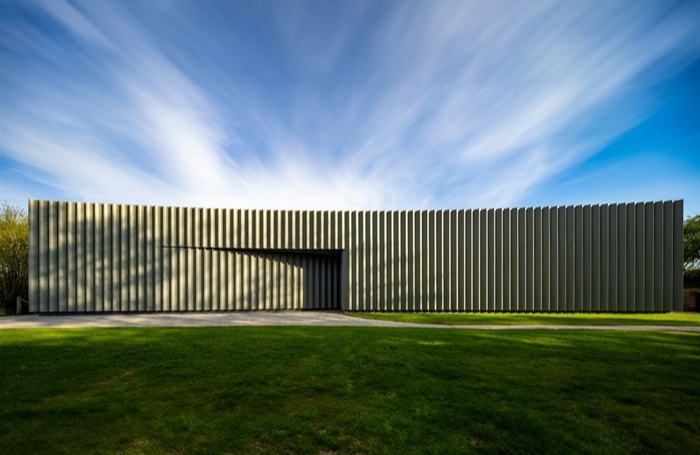The RIBA Awards are a celebration of architectural excellence and buildings that shape the way people live, work, and connect with their surroundings. Recognised globally, the annual awards spotlight the most innovative, sustainable, and socially impactful designs across the UK.
As a practice, being part of the RIBA Awards submission process often provides a front-row seat to the future of the built environment and a reminder that they can be a powerful platform for inspiration, collaboration, and, of course, recognition.
RIBA is once again inviting submissions from across the architectural profession for its 2026 awards, with important changes to the application process that every prospective entrant should be aware of.
Take a look at RIBA's House of the Year nominees from 2024. (Video: RIBA)
Why does sustainability data matter?
The climate emergency is a central consideration and a driving force at RIBA.
For over a decade RIBA has asked for sustainability data to be submitted as part of entry to the awards. In recent years, the scope of this mandatory data has increased, and for 2026, we will - for the first time - require embodied carbon data at the point of entry.
An assessment of embodied carbon is a key part of the RIBA Awards judging process, reflecting the importance of sustainability goals in architecture. But it’s also a key reflection point for practices, to help benchmark your project against climate targets, and to inform future material choices and design decisions.
For context, RIBA has been a key contributor to the - a collaboration between nine different built environment bodies that resulted in a framework designed to define and verify what it means for buildings in the UK to be truly net zero carbon. RIBA’s own 2030 Climate Challenge remains central to its aim to reduce the profession’s carbon footprint.
What’s new for 2026?
The sustainability section of the RIBA Awards entry form is designed to help the jury understand how a project has addressed the climate emergency through its design. The form includes several text boxes for describing approaches to reducing carbon emissions, energy consumption and water use, alongside four mandatory data points.
The first two, operational energy and potable water use, have been mandatory for the past few years, but for 2026, RIBA will also require upfront and embodied carbon at entry point. Here’s a breakdown:
- Operational Energy (kWh/m²/y): This is the total annual gross operational energy needed to run a project, taken from meter readings, for both electricity (and gas if applicable). The figure needs to reflect the gross energy usage, and therefore should not have any energy generated on site (from photovoltaics etc) deducted. It should reflect the actual energy that occupants use, based on 12 months worth of measurements. It reflects real-lived usage, not a predicted scenario;
- Potable Water Use (l/person/day): This is the total annual drinking water used on site, taken from 12 months of meter readings. The figure should be in l/person/day for all projects except schools where the metric to use is m3/pupil/yr;
- Upfront Carbon (KgCO₂eq/m²) Upfront carbon emissions are the greenhouse gas emissions associated with materials and construction processes up to practical completion. This should encompass modules A1-A5 of the RICS Whole Life Carbon Assessment for the Built Environment (WLCA);
- Embodied Carbon (KgCO₂eq/m²) The lifecycle embodied carbon emissions of a building are the total greenhouse gas emissions and removals associated with materials and construction processes throughout it’s lifecycle. This should encompass modules A1-A5, B1-B5 and C1-C4 of the . Please note, Whole Life carbon is required if you would like your project to be considered for the Stirling Prize.

How can RIBA help entrants gather the data?
As a profession, we need to take the steps towards making embodied carbon analysis throughout the design process, business as usual. Collating and providing this data can be daunting, but there are resources that can help.
Operational data for energy and potable water use is relatively straightforward to calculate once you have 12 months of meter readings.
These articles on RIBA Journal provide guidance:
- .
RIBA has also published a series of CPD courses on the RIBA Academy related to carbon calculation, such as:
- : Viewers will learn about embodied and Whole Life Carbon analysis, how to embed it into an iterative design process, where to find the data you will need, questions to ask manufacturers, and carbon passports;
- : Provides holistic knowledge around climate change in the built environment, with a specific focus on RIBA’s Climate Literacy Knowledge Schedule’s Energy and Carbon section. The aim is to equip practitioners with a clear roadmap, a set of tools and holistic knowledge for delivering low/zero energy/carbon buildings, without causing any unintended consequence.
The Chartered Member voucher code can be used to purchase these modules, if you haven’t used it already. It is possible to use the voucher on more than one module, provided they’re in your Shopping Cart at the same time and not purchased separately. The £200 discount will be applied on the total price of all products. It’s important to note that the voucher code can only be used one time, and if the total purchase/checkout price is above £200, you will need to pay the remaining amount. If the total purchase/checkout price is below £200, you will not be able to spend the remaining balance of the voucher code in any future purchases.
Read the full voucher code terms and conditions.
Mina Hasman’s is also a recommended resource.
Practices are actively encouraged to undertake carbon calculations in-house, and if you have a bill of quantities and/or BIM model the calculations are relatively straightforward. If the project is complex, you might consider employing a specialist consultant. There are a range of tools that a practice can use to calculate a building’s carbon footprint, including web-based platforms, plugins for commonly used software, and other open-source tools developed in-house by practices.
For smaller projects, is running an autumn beta testing ����logo for its own carbon calculation tool - called SmallCarbon - which would be appropriate for calculating the data required to enter this year’s awards. Please complete the and they’ll be in touch if your project is appropriate for the emerging software.
“While sustainability is a central pillar of the judging criteria, it’s important to note that projects are evaluated holistically,” Jessica Davies, RIBA’s Interim Head of Awards, says. “Judges will consider all aspects of a project - including composition, inclusivity, contextual sensitivity, and social impact - ensuring that sustainability is balanced with a broad spectrum of architectural values.”

What happens next?
Please join us for a Question and Answer session with the Awards team at midday on the 23 September. The Awards team are on hand to help guide you through the process so if you have any questions related to the RIBA Awards 2026, please contact: awards@riba.org.
Read more about RIBA Awards guidelines and criteria.
Awards entries open on 17 October 2025.
Text by Paul Hirons. This is a Professional Feature edited by the RIBA Practice team. Send us your feedback and ideas
RIBA Core Curriculum topic: Business, clients and services.
As part of the flexible RIBA CPD ����logo, professional features count as microlearning. See further information on the updated RIBA CPD core curriculum and on fulfilling your CPD requirements as an RIBA Chartered Member.



